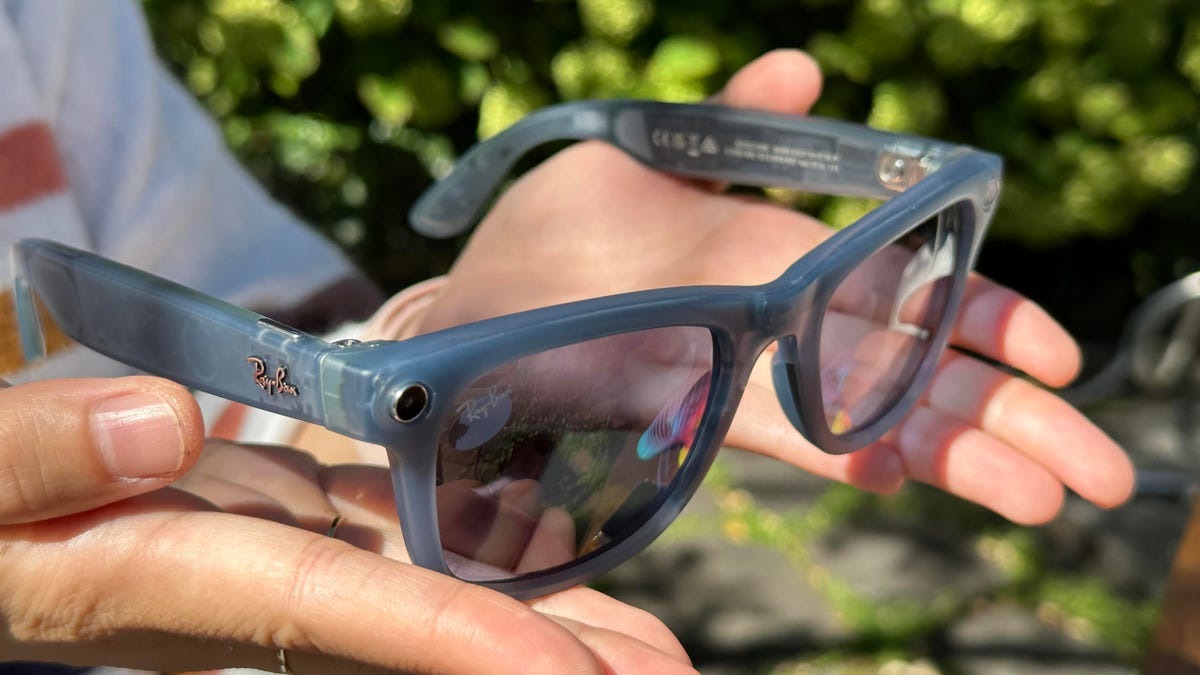A lot has changed in the two years since Facebook released its Ray-Ban-branded smart glasses. Facebook is now called Meta, and its data glasses have a new name: the Ray-Ban Meta smart glasses. Two years ago, I didn’t know how I felt about the product. The Ray-Ban Stories were the most sophisticated smart glasses I had tried, but with poor camera quality, they seemed more of a novelty than something most people could use.
After a week with the company’s recent sunglasses, they still feel a bit like a novelty. However, Meta has managed to improve the basic features while making them more useful with new features such as live streaming and hands-free photo messaging. And the addition of an AI assistant opens up fascinating possibilities. There are still privacy issues, but the improvements could make the compromise worthwhile, especially for developers and those who are already familiar with the Meta platform.
What has changed

Just like its predecessor, the Ray-Ban Meta smart glasses are much more like a pair of Ray-Bans than a gadget, and that’s always a good thing. Meta has lightened both the frames and the powered cover, which now looks like the classic Ray-Ban bag made of light brown leather. The glasses are still a little bulkier than a typical pair of sunglasses, but they are not heavy even with prolonged use.
This year’s model omitted the power button from the original, which is good. The glasses will now turn on automatically when you take them out of the cover and put them on (although sometimes you have to launch the Meta View app to connect to your phone).
The glasses themselves now charge wirelessly via the nose, rather than near the hinges. Meta says that the device can work for about four hours on a single charge, and the cover contains four additional charges. In a week of moderate use, I didn’t have to fill the cover, but I would have liked a more accurate display of the battery level than the light on the front. (The Meta View app displays the exact power level of your glasses, but not the cover.)

My other small complaint is that the new powered configuration makes it a little more difficult to remove the glasses from the cover. It takes a little force to detach the frames from the magnetic powered contacts, and the vertical orientation of the cover makes it easier to grip (and smudge) the lenses.
The recent generation of smart glasses is available both in the signature Wayfarer style and in a new, rounder “headliner” design. I opted for a pair of blue “Shiny Jean” headliners, but there are also light brown and black variations. It’s worth noting that the “shiny jeans” and “shiny caramel” options are slightly transparent, allowing you to see some of the circuits and other technologies built into the frames.
The brighter colors also make the camera and the LED indicator in the upper corner of each lens stand out a little more than their black counterparts. (Meta has also updated its software to prevent the camera from being used when the LED is covered.) None of this bothered me, but if you want a more subtle look, the black frames can hide the tech inside better.
New camera, better sound

However, look carefully at the transparent frames and you can see evidence of the many upgrades. There are now five built-in microphones in each pair, two in each arm and one in the nose. The additional microphones also allow new “immersive” audio features for video. If you record a clip with sound from several sources, for example, when someone is talking in front of you and another person is talking behind you, you can hear voices from different directions when you play the video on the frames. This is an interesting trick, but it doesn’t seem particularly useful.
However, directional audio is a sign of the dramatic improvement in sound quality. The open-ear speakers are 50% louder and do not distort at higher volumes, unlike the previous generation. Meta says that the new design has also reduced sound loss, but I found that it really depends on the volume at which you are listening and the ambient noise.

